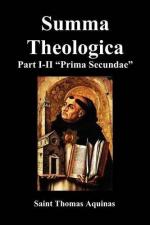Reply Obj. 3: Neither does this explanation of the name appear to be very much to the point, since the word “ceremony” is not Greek but Latin. We may say, however, that, since man’s salvation is from God, those precepts above all seem to be rules of salvation, which direct man to God: and accordingly those which refer to Divine worship are called ceremonial precepts.
Reply Obj. 4: This explanation of the ceremonial precepts has a certain amount of probability: not that they are called ceremonial precisely because there is no evident reason for them; this is a kind of consequence. For, since the precepts referring to the Divine worship must needs be figurative, as we shall state further on (A. 2), the consequence is that the reason for them is not so very evident. ________________________
SECOND ARTICLE [I-II, Q. 101, Art. 2]
Whether the Ceremonial Precepts Are Figurative?
Objection 1: It would seem that the ceremonial precepts are not figurative. For it is the duty of every teacher to express himself in such a way as to be easily understood, as Augustine states (De Doctr. Christ. iv, 4, 10) and this seems very necessary in the framing of a law: because precepts of law are proposed to the populace; for which reason a law should be manifest, as Isidore declares (Etym. v, 21). If therefore the precepts of the Law were given as figures of something, it seems unbecoming that Moses should have delivered these precepts without explaining what they signified.
Obj. 2: Further, whatever is done for the worship of God, should be entirely free from unfittingness. But the performance of actions in representation of others, seems to savor of the theatre or of the drama: because formerly the actions performed in theatres were done to represent the actions of others. Therefore it seems that such things should not be done for the worship of God. But the ceremonial precepts are ordained to the Divine worship, as stated above (A. 1). Therefore they should not be figurative.
Obj. 3: Further, Augustine says (Enchiridion iii, iv) that “God is worshipped chiefly by faith, hope, and charity.” But the precepts of faith, hope, and charity are not figurative. Therefore the ceremonial precepts should not be figurative.
Obj. 4: Further, Our Lord said (John 4:24): “God is a spirit, and they that adore Him, must adore Him in spirit and in truth.” But a figure is not the very truth: in fact one is condivided with the other. Therefore the ceremonial precepts, which refer to the Divine worship, should not be figurative.
On the contrary, The Apostle says (Col. 2:16, 17): “Let no man . . . judge you in meat or in drink, or in respect of a festival day, or of the new moon, or of the sabbaths, which are a shadow of things to come.”




